Inside the bold new HQ for Atlas Concrete: A showcase of innovative low-carbon concrete
Written by
04 August 2025
•
4 min read
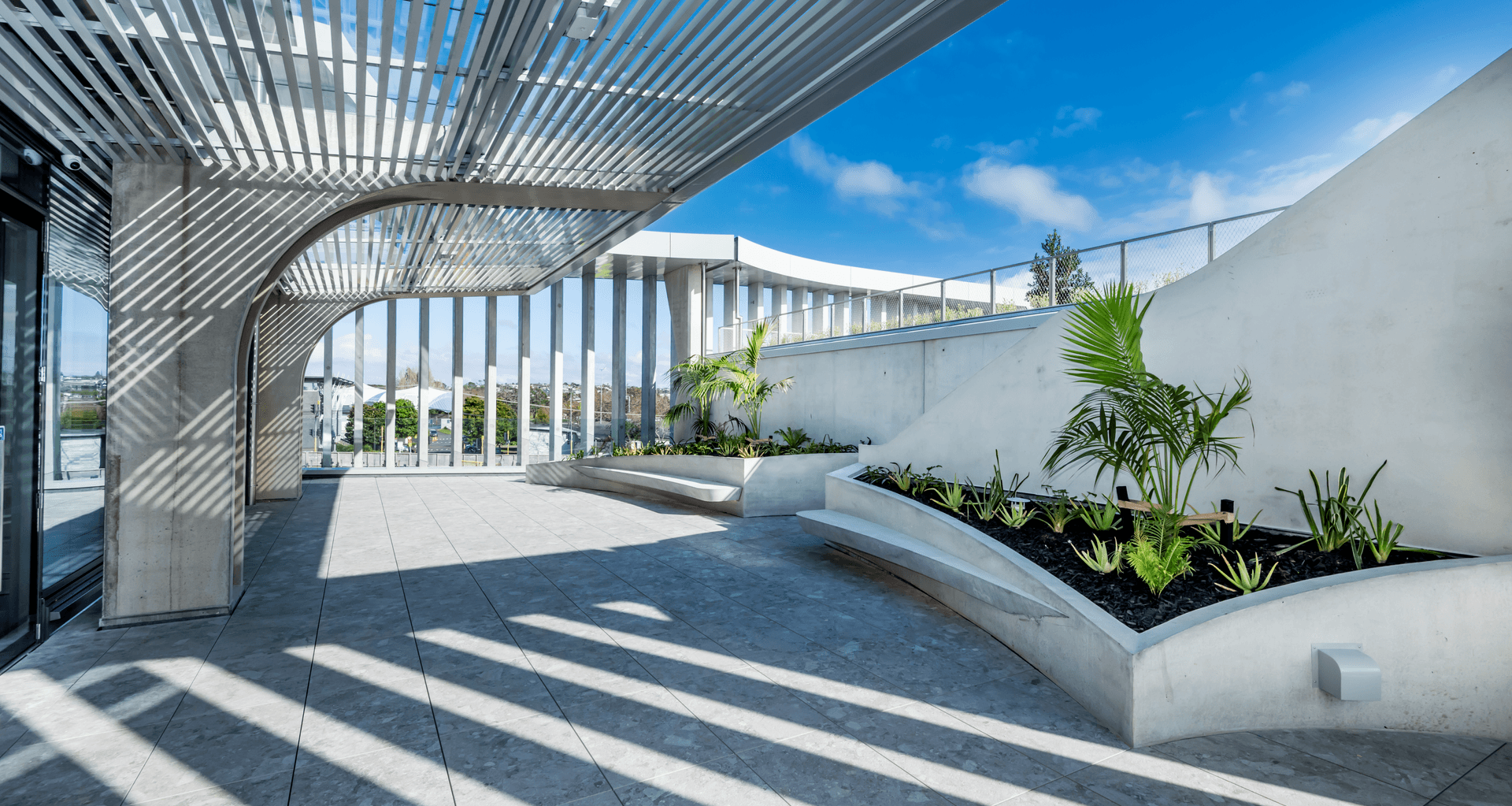
An eye-catching addition to Wairau Road, the newly completed Atlas Concrete headquarters is a contemporary three-storey building that integrates office space, a sales area, a warehouse, a green roof podium and a dedicated space for logistics and operations.
Envisioned by Atlas’s CEO Graham Collie, designed by Jonathan Walker Architects and built by CMP Construction, the result is a visually striking structure with curves and creative forms, pushing the boundaries of what can be achieved with concrete, without compromise.
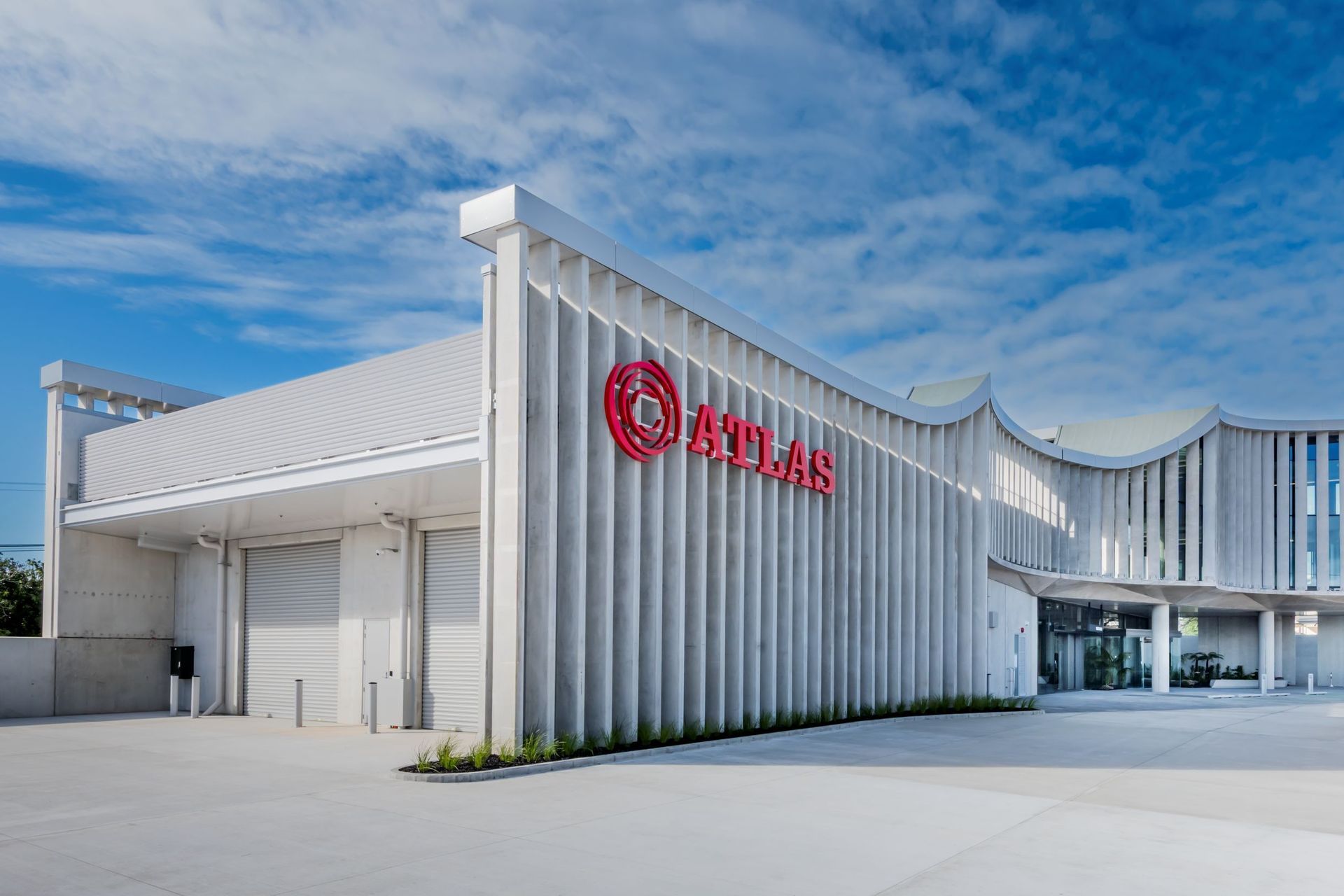
“Our design vision is rooted in celebrating the sculptural nature of concrete while pushing the boundaries of what is possible in concrete construction,” says Jonathon Walker Architects (JWA Architects).
“The architectural expression draws inspiration from the concrete-making process itself, particularly the swirling, dynamic motion of mixing. Enveloping the fully-glazed office spaces, a veil of concrete fins serves a dual purpose: providing essential sun shading while creating a subtle barrier between the work environment and its industrial surroundings. This delicate concrete screen challenges conventional perceptions of concrete as merely a solid, monolithic material, instead creating a permeable boundary that blurs the distinction between interior and exterior spaces.”
The hero product of this bespoke build? Atlas Concrete’s GreenStone LCC.
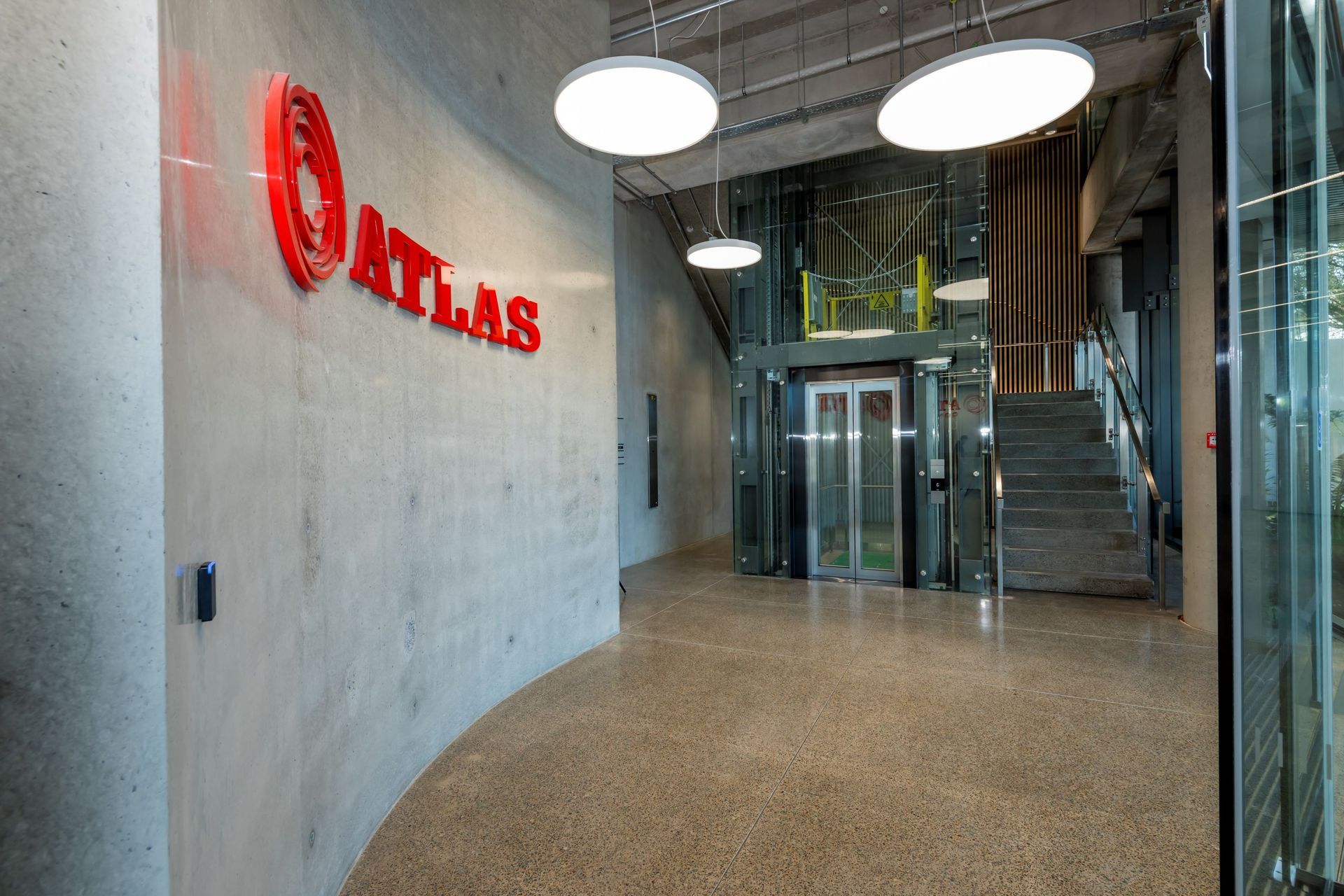
GreenStone LCC: Low-carbon concrete that reduces emissions without compromise
By using GreenStone Low Carbon Concrete extensively throughout the project, a significantly higher level of cement substitution was achieved compared to industry standards – resulting in a 24 per cent reduction in embodied carbon relative to the New Zealand Green Building Council’s baseline.
“The building is a celebration of everything that concrete can achieve design-wise, but Atlas also wanted to highlight that this reduction in embodied carbon can be achieved without any compromise in terms of quality or price,” shares Atlas Concrete’s Account Manager, Sheldon Turner.
Every concrete element – from the floors and beams to the precast components – has been produced using GreenStone LCC, a demonstration of its versatility for projects of all shapes and sizes.
A true game-changer for New Zealand builders, architects and homeowners, Greenstone LCC uses well-proven global technology that reduces carbon emissions plus improves durability, without a premium price tag.
- Lower Carbon: Numerous factors contribute to the lower embodied carbon of GreenStone LCC. A key element is Atlas Concrete’s partnership with Golden Bay Cement, New Zealand’s lowest carbon cement producer. The use of Holcim’s world-class, high-performance Supplementary Cementitious Materials (SCMs), such as Fly Ash and Slag, further reduces the carbon footprint of the concrete mixes. To enhance material and energy efficiency, Atlas also uses large electric-powered plant mixers instead of traditional diesel-powered truck mixers, significantly reducing emissions and operational energy use.
- Denser, more durable concrete: The GreenStone LCC range incorporates BFS (Blast Furnace Slag) or Fly Ash – industrial by-products collectively known as Supplementary Cementitious Materials (SCMs) that not only lower carbon emissions but also enhance concrete durability. “We have customers specifying our SCMs for foundational piles and sea walls where the concrete is exposed to harsher conditions,” says Sheldon.
- Cost-neutral: GreenStone LCC is currently cost-neutral for most concrete, offering a sustainable option for professionals and homeowners without incurring additional financial burdens. This makes it an attractive choice for those looking to make environmentally conscious decisions while staying within budget.
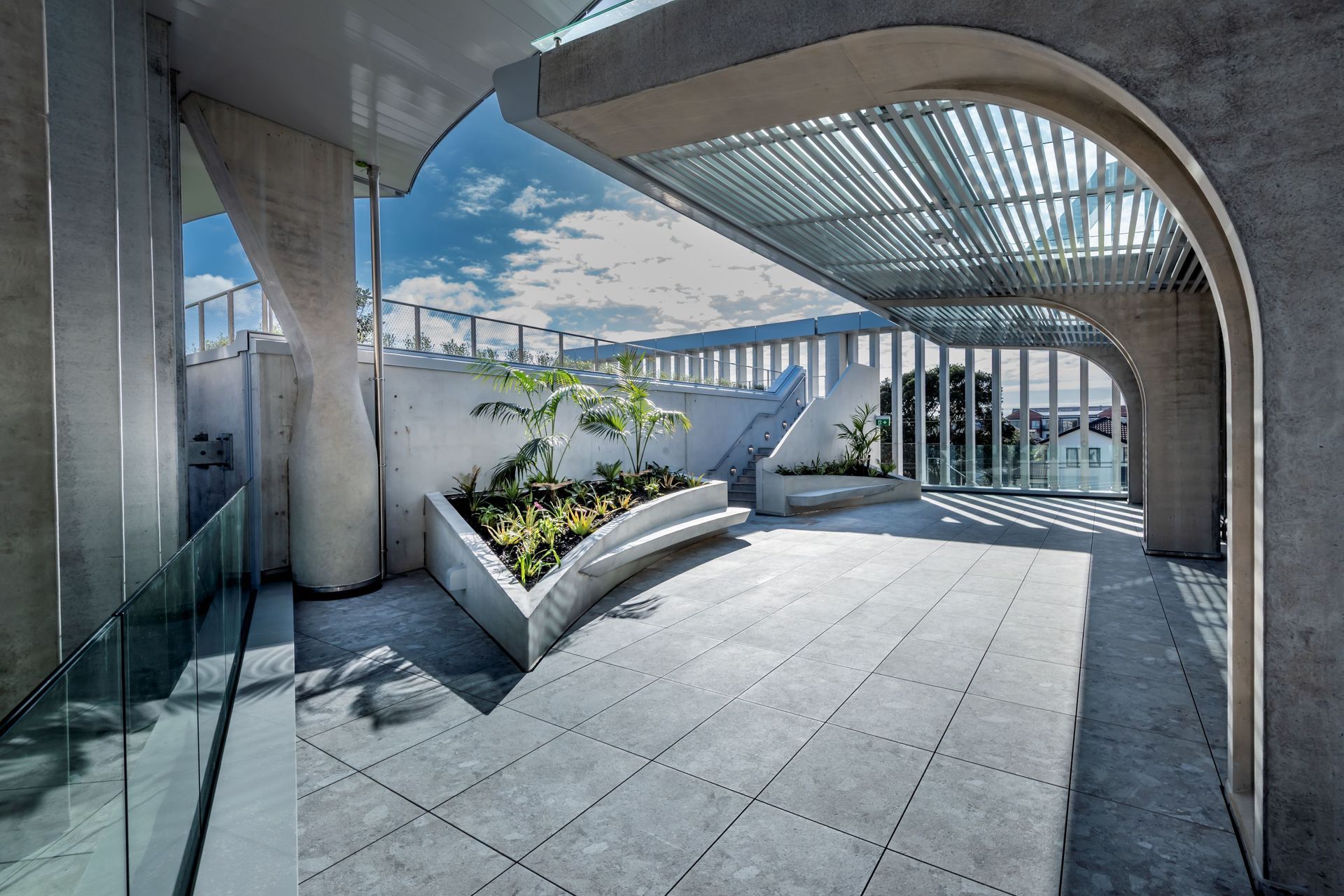
Process Environmental Product Declarations (EDPs) now available from Atlas Concrete
Taking their commitment a step further, Atlas Concrete is now certified to provide Process EPDs (Environmental Product Declarations) for customer projects.
A globally recognised document that outlines the environmental impact of a building product, covering figures such as global warming potential (GWP), resource consumption, and other impacts, process EPDs are a powerful tool to calculate the environmental profile for their sustainable concrete mixes delivered to any location in Auckland.
“Having these tools available makes the process of matching someone’s low carbon goals, cost goals and performance goals all at once. We can quantify things straight away,” says Sheldon.
“If you have a target you need to reach, come to us with your baseline and let us design the concrete mix for you.”
Process EPDs allow you to:
- Quantify carbon reductions for every batch of concrete.
- Use Greenstone LCC concrete mixes to reach specific sustainability goals or project certifications.
- Compare options for greater reductions in CO2 and make informed decisions.
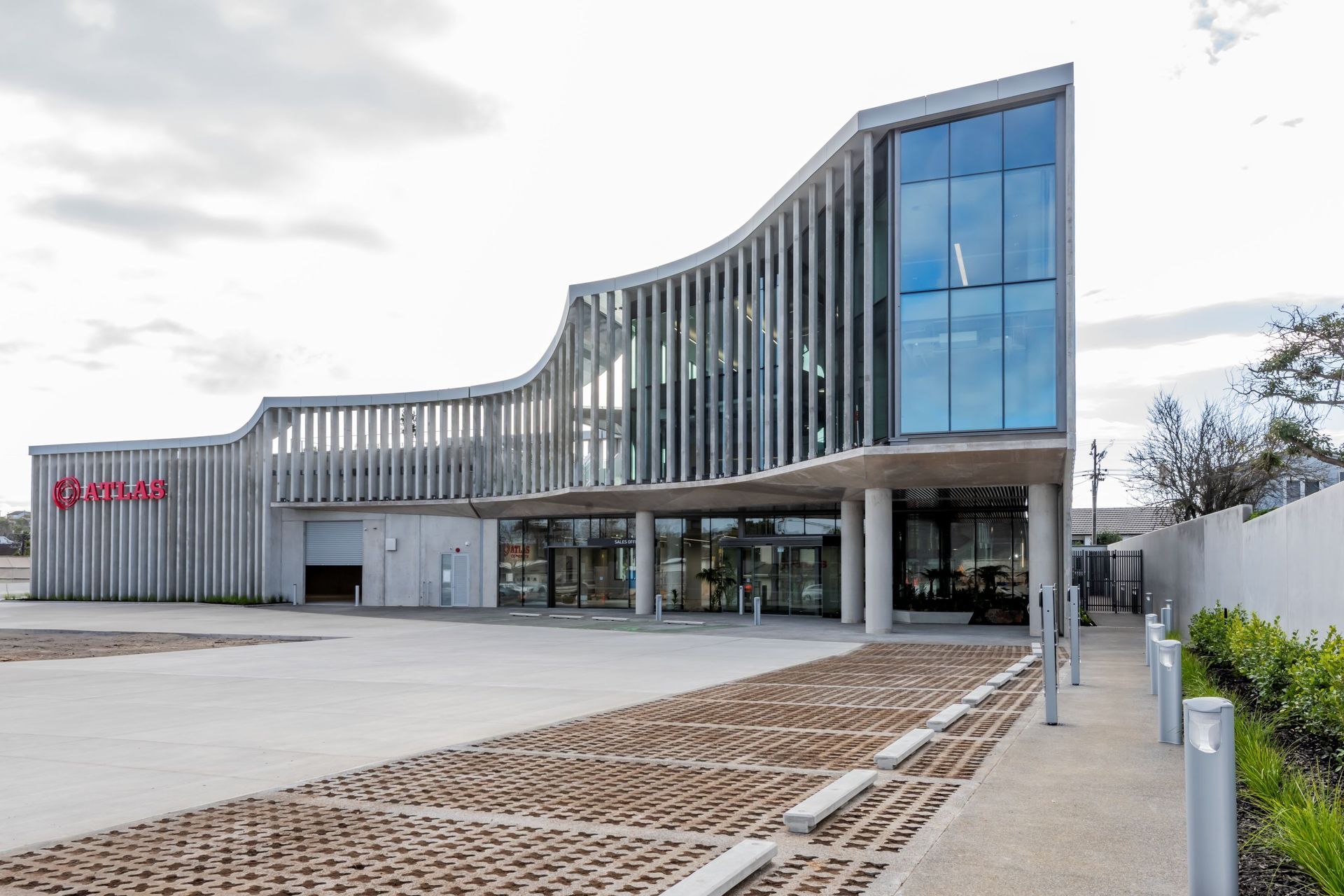
A concrete blueprint
More than a building, the new Atlas Concrete Head Office is a guiding example of what can be achieved with considered design and material selection – it’s a model for how concrete can be used intentionally, creatively, and sustainably.
All concrete can have reduced embodied carbon. Learn more about GreenStone LCC from Atlas Concrete.